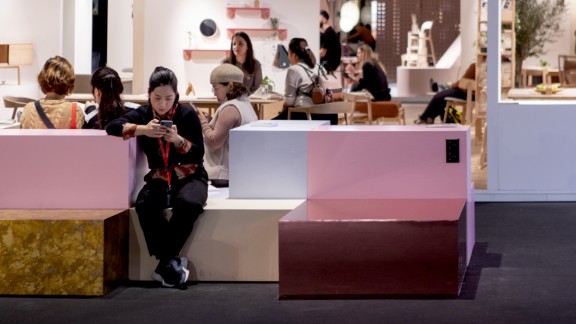Augmented reality: furnishing the apartment virtually
Online commerce is booming, including in the furniture industry. In order to offer customers an ever better shopping experience, furniture dealers trust in technical innovation. The latest trend: augmented reality, or AR. An application that makes sofa, cabinet and co. experienceable in one's own home prior to ordering. Although the trend is only getting started, it has already revolutionised the industry.

Augmented reality is changing the furniture industry (Image source: Inter IKEA Systems B.V. 2017)
How the furniture industry can benefit from the trend
It is often difficult for customers to imagine how the sofa looks in one's own home or whether the new cabinet really suits the furnishings. Browsing for hours in online shops, several visits to the furniture store and complicated measuring of one's own apartment are part and parcel of buying furniture for many customers – that costs time and nerves. In addition, the hurdle for buying a sofa is considerably higher than for smaller purchases, like a vase or a lamp. The decision to purchase is thus often drawn out over several weeks. A process that furniture dealers have only been able to accompany with difficulty up to now. Augmented reality does precisely that. The application meets the customer at the point of doubt and playfully assists him or her with the decision to purchase.
It's that easy
One major example is the simple usage of augmented reality. This is because, as complex as the software behind the application is, so simple is the handling for customers. All that is required is a smartphone or tablet to look at the new furniture in one's own home.
1. Load AR app onto the smartphone or tablet
2. Scan the room with the camera
3. Select the desired item of furniture out of the product catalogue
In order to visualise the object true to scale, the camera orients itself to the floor and walls. As soon as the piece of furniture appears on the screen, the customer can very easily position it at the desired location and enlarge, reduce or relocate it. The customer in this way already playfully experiences new furniture prior to the purchase and acquires a sense of the space, which used to be absent with online shopping.

Augmented reality is blazing new trails in customer consultation for furniture dealers (Source: Pexels)
Customer loyalty made easy
Consumers are in the meantime accustomed to online shopping being an experience tailored to them. Recommendation mechanisms like "You might also like this" or "What might suit this" are common practices and give consumers the feeling that a brand knows their taste exactly. Augmented reality goes a step further and not only recommends suitable products, but also virtually brings the pieces of furniture into your own home. Traders and manufacturers in particular can profit from this playful way of experiencing furniture. This is because, those who try out whether the new couch fits in the living room occupy themselves longer with a product and the brand than in a classic online shop. Returns can also be considerably decreased through AR apps. Ultimately, the interested party has thoroughly "tested" out the piece of furniture in advance and thus avoids any bad surprises upon delivery.
Virtually expand sales area
Many furniture stores have only limited sales area and don't have the possibility to display their entire assortment. The customer would prefer the armchair in beige, but it is only displayed in black? This is no longer a problem with augmented reality. Furniture dealers can very easily show their customers all product configurations with the help of the application – all furnishing items can thus be experienced despite limited exhibition space.
What AR cannot yet do
Does the new sofa fit in the living room? Is the wardrobe too big for my bedroom? And do I prefer the armchair in green or in yellow? Questions that the user can answer through augmented reality with only a few clicks. The application creates the connection between the furniture store and one's own home, but cannot (yet) fulfil all needs.
However, there is one thing AR cannot do: make items of furniture physically experienceable. Testing the new bed or couch by lying on or sitting in them doesn't work virtually. The customer acquires an impression of what the item of furniture looks like, but not what it feels like. The app can also not provide consultation with trained specialist staff. Especially with larger purchases, it is often advisable that the customer speak with an expert – whether on location or by Video consultation . Augmented reality has to date thus primarily been an innovative aid, which creates a connection between online and offline commerce.
Augmented reality as a new sales channel: IKEA and Co. show how it's done
Several furniture dealers discovered augmented reality applications at an early date and thus found a way to offer the customer a new shopping experience.
Augmented reality: a trend with a future
Augmented reality clearly shows the direction in which the furniture industry can develop in times of digitalisation. Several manufacturers and dealers have already proven that the connection of the real world with virtual objects functions not only in the games industry. Even if augmented reality is still just getting started in the furniture industry, it pays to keep an eye on the application. This because, those who want to raise the enthusiasm of customers for their products must repeatedly embark on new paths and offer more than the classic stationary trade.







